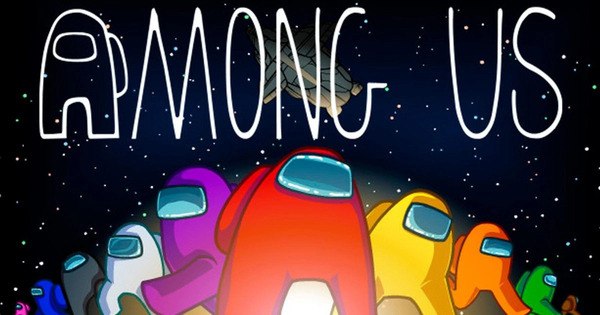FIFA 23, developed by EA Sports and released in September 2022, marks the end of an era as the final entry in the long-running FIFA series before its rebranding to EA SPORTS FC. As the culmination of nearly three decades of football simulation history, FIFA 23 refines its gameplay, expands women's football, and introduces key innovations that enhance realism and accessibility across all platforms.
This article explores FIFA 23’s gameplay mechanics, modes, innovations, and cultural impact—analyzing how it closes the chapter on the FIFA name while setting the stage for a new football gaming era.
1. The End of the FIFA Era
Since 1993, EA Sports’ FIFA series has dominated the football gaming landscape, becoming synonymous with virtual soccer. FIFA 23 is the final title under the FIFA branding, as EA ended its partnership with the football governing body in 2023.
This final edition is both a celebration and a farewell. It integrates the best elements of past titles while offering a modern take on global football, with over 19,000 players, 700 teams, 100 stadiums, and 30+ leagues, including both the men’s and women’s World Cups.
The transition to EA SPORTS FC begins here, but FIFA 23 is a fitting and fully loaded farewell.
2. HyperMotion2 and Gameplay Enhancements
FIFA 23 builds on its predecessor’s HyperMotion technology with HyperMotion2, using real match data and motion capture to enhance animation fidelity and realism. Movements are more responsive, ball control is sharper, and player behavior mimics real-life tendencies with better fluidity and nuance.
Key gameplay upgrades include:
-
Advanced machine learning for smoother animations
-
More realistic player acceleration and stamina systems
-
Updated dribbling, jockeying, and tackling responsiveness
Tactical gameplay benefits from intelligent AI positioning, improved ball physics, and contextual touches. FIFA 23 feels more grounded and strategic than its arcade-style predecessors.
3. Career Mode – More Depth and Immersion
Career Mode receives meaningful updates that improve immersion and realism for both Player Career and Manager Career.
Highlights include:
-
Player Personality system that tracks your on- and off-pitch behavior
-
Dynamic Moments with cinematic cutscenes
-
Real managers like Jürgen Klopp, Pep Guardiola, and Thomas Tuchel available as playable options
You can now influence your player’s development through decisions, lifestyle choices, and match performance. Meanwhile, Manager Mode allows for more granular team control, including transfer negotiations, training plans, and youth development.
While still in need of further evolution, Career Mode in FIFA 23 offers the most refined version to date.
4. FIFA Ultimate Team – Chemistry Rework and FUT Moments
FIFA Ultimate Team (FUT) continues to be the series’ most popular mode, allowing players to build dream squads by collecting cards, completing objectives, and competing online.
FIFA 23 introduces:
-
A revamped Chemistry system that provides flexibility in squad building
-
FUT Moments, a new single-player challenge mode with bite-sized scenarios
-
Enhanced Icons and Heroes collections
The chemistry revamp eliminates strict position-based links, encouraging more creative teams. FUT Moments add casual, reward-driven play for offline users, making FUT more accessible to all playstyles.
Despite its microtransaction-heavy ecosystem, FUT remains the heartbeat of FIFA’s online competitive experience.
5. Women's Football Expansion
FIFA 23 makes a major leap for women’s football, introducing full club-level integration for the first time.
Features include:
-
The Barclays FA Women’s Super League (England) and D1 Arkema (France)
-
Expanded women’s national teams
-
Full playable FIFA Women’s World Cup Australia & New Zealand 2023™
Animations, models, and physics have been specifically designed to reflect women’s football authenticity. With real players, leagues, and tournaments now featured, FIFA 23 sets a new standard for representation and inclusion in sports gaming.
This move supports growing global interest in women’s football and aligns FIFA’s virtual offering with real-world progress.
6. Volta Football – Street Style and Customization
Volta Football, introduced in FIFA 20, returns with refined mechanics, cosmetics, and co-op functionality. Inspired by street football, Volta offers smaller-scale matches with freestyle flair and customization.
Players can:
-
Build unique avatars with clothing, tattoos, and emotes
-
Compete in Volta Arcades with party-style mini-games
-
Play co-op with friends in short 4v4 or 5v5 matches
While Volta hasn’t reached the popularity of FUT or Career Mode, its role as a casual, stylish, and social game mode continues to provide a change of pace for players who enjoy flair over formality.
7. Pro Clubs and Crossplay Improvements
FIFA 23 finally begins to embrace cross-platform functionality, offering crossplay for 1v1 modes such as FUT, Online Seasons, and Friendlies (between PlayStation, Xbox, and PC of the same generation).
While Pro Clubs still lacks full crossplay support at launch, it receives incremental improvements in customization, drop-in matchmaking, and player progression.
EA also added shared seasonal progress between Volta and Pro Clubs, allowing players to earn rewards across both modes. Though fans still seek a major overhaul of Pro Clubs, these small steps signal potential growth for future titles.
8. Presentation, Commentary, and Audio Design
FIFA 23 offers one of the most authentic football presentation experiences in gaming. Broadcast packages, crowd reactions, commentary teams, and stadium ambiance are more immersive than ever.
New features include:
-
Female commentary from Alex Scott
-
Updated scoreboards for Premier League, La Liga, and UEFA competitions
-
Dynamic crowd chants and environmental effects
Each stadium feels unique, whether you’re playing under the lights at Anfield or in the roaring cauldron of the Bernabéu. EA’s attention to detail reinforces immersion, making every match feel like a televised event.
9. Licensing, Authenticity, and Global Reach
FIFA 23 retains its unmatched licensing portfolio, featuring:
-
Official leagues: Premier League, Bundesliga, Serie A, Ligue 1, La Liga, MLS, and more
-
Over 300 authentic teams
-
100+ stadiums from around the world
-
Full UEFA Champions League, Europa League, and Super Cup branding
These licenses ensure real kits, rosters, and broadcast elements that reflect current football culture. With global appeal and local accuracy, FIFA 23 sets the benchmark for sports simulation authenticity.
This authenticity continues to be a major reason fans return year after year.
10. Legacy, Criticism, and What Comes Next
As the last game under the FIFA name, FIFA 23 carries the weight of history. While it delivers an impressive swan song, it isn’t without criticism.
Common concerns include:
-
Continued reliance on microtransactions in FUT
-
Minimal overhaul of Pro Clubs and Career Mode foundations
-
Occasional bugs and matchmaking issues
However, the game represents the most feature-rich and polished entry in the franchise’s long history. With EA SPORTS FC 24 poised to take over, FIFA 23 stands as both a farewell and a foundation for the future of football gaming.
Conclusion
FIFA 23 serves as a tribute to nearly three decades of digital football excellence. It refines core gameplay, expands representation, improves visuals, and introduces long-requested features, all while maintaining the high standards of realism that fans expect.
While not a revolutionary leap, FIFA 23 is a confident and content-packed send-off to the FIFA brand. It honors the past, celebrates the present, and hints at an ambitious future under EA’s new identity.
For football fans, gamers, and esports competitors alike, FIFA 23 is both a love letter and a launchpad—a final goal before the next kick-off.





























